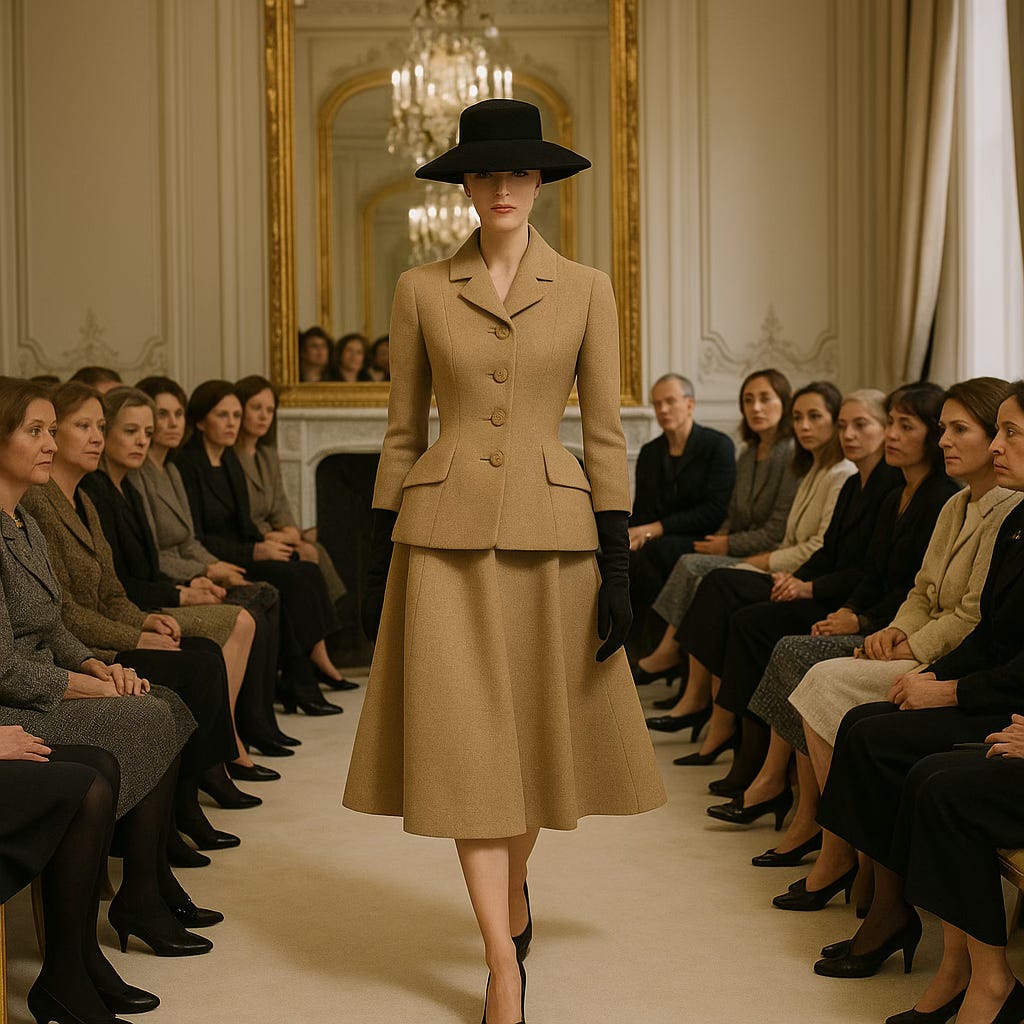Why models don't smile? The Science, History and Communication Strategy Behind
365 days of fashion: the e-ncyclopedia of fashion
Thursday, July 31, 2025
Have you ever noticed how models on the runway always have serious, sometimes even somber, faces? Despite walking the most famous catwalks in the world and wearing dreamy designer clothes, their expressions remain stern and impassive. Have you ever wondered why?
Behind those blank stares lies more than just an aesthetic choice: there's a visual culture, a communication strategy, and a long historical evolution. It's not just about trends or style. It's a deliberate language that the fashion industry uses to convey specific values and emotions. To understand it, we need to step back in time, retrace fashion history, and listen to those who have walked the runway.
A Look Back at History
In the 1950s and 60s, fashion shows were more like theatrical performances. Models didn’t just walk, they smiled and interacted with the audience. Clothes came to life not just through movement, but also through the wearers’ expressions. It was an era of effortless elegance and playful femininity.
However, things then began to shift. With the rise of feminism and the cultural revolution of the 1970s, fashion began to reconsider the image of women. No longer just decorative, women were portrayed as strong, independent. Yves Saint Laurent, for instance in 1966 sent women down the runway in tailored menswear, challenging stereotypes and presenting a more powerful image.
In the 1980s, the conceptual style of Japanese designers like Rei Kawakubo (Comme des Garçons) and Yohji Yamamoto helped redefine fashion shows as more artistic and introspective moments. The focus shifted increasingly toward the clothes themselves, their shapes and tailoring, rather than the model’s personality.
According to fashion historian Lydia Kamitsis, from that point onward, the neutral expression became the standard in high fashion. Leyla Neri, anthropologist and lecturer at Institut Français de la Mode, explains: “Models have gradually been stripped of their subjectivity to become living mannequins, expressive tools of the designer.”
What Do Models Say About It?
But what do models themselves have to say? “You just don’t smile. You just don’t,” recalled British model and designer Ty Ogunkoya, thinking back to the instructions he received when he started.
Victoire Macon Dauxerre, a former model for Céline, explained: “They always told me, remember they’re looking at the clothes, not at you.” In other words, the more neutral the expression, the more the focus remains on the garments.
Matthieu Villot, a casting director for various international agencies, says models are trained to master what he calls the “glare” or killer look: “Chin down, eyes up. The idea is that nothing should distract from the clothes. A smile creates a connection, and in luxury fashion, that’s not always desirable.”
The Exceptions to the Rule
But it hasn’t always been this way. In the 1990s, with the rise of supermodels like Naomi Campbell, Cindy Crawford, Linda Evangelista, and Claudia Schiffer, the face returned to the spotlight. These models weren’t just walking canvases for fashion; they were stars, full of charisma, personality, and negotiating power.
Who can forget the iconic 1991 Versace show when Naomi, Linda, Christy, and Cindy walked arm-in-arm to George Michael’s Freedom, smiling and radiant? Or the 1993 Chanel runway, where models laughed, interacted, and blew kisses?
Still, Claudia Schiffer noted in a 2007 Telegraph interview: “Once, the focus was on the models. Now it’s back on the clothes. They no longer ask us to be the stars, but visual supports for the brand’s message.”
Some designers, however, still choose to break the rules. Paul Smith told, “If clothes make you happy, why shouldn’t you smile? A smile is contagious.” Jean Paul Gaultier, known for his irreverent style, has often featured expressive, theatrical, and ironic models in his shows.
A Matter of Visual Communication and Neuroscience
Beyond culture and aesthetics, science also plays a role. Our brains are hardwired to be drawn to human faces. If a face is smiling, all visual attention is pulled toward that emotional expression. The risk? The clothes might be overlooked.
Keep reading with a 7-day free trial
Subscribe to Glam Observer to keep reading this post and get 7 days of free access to the full post archives.
